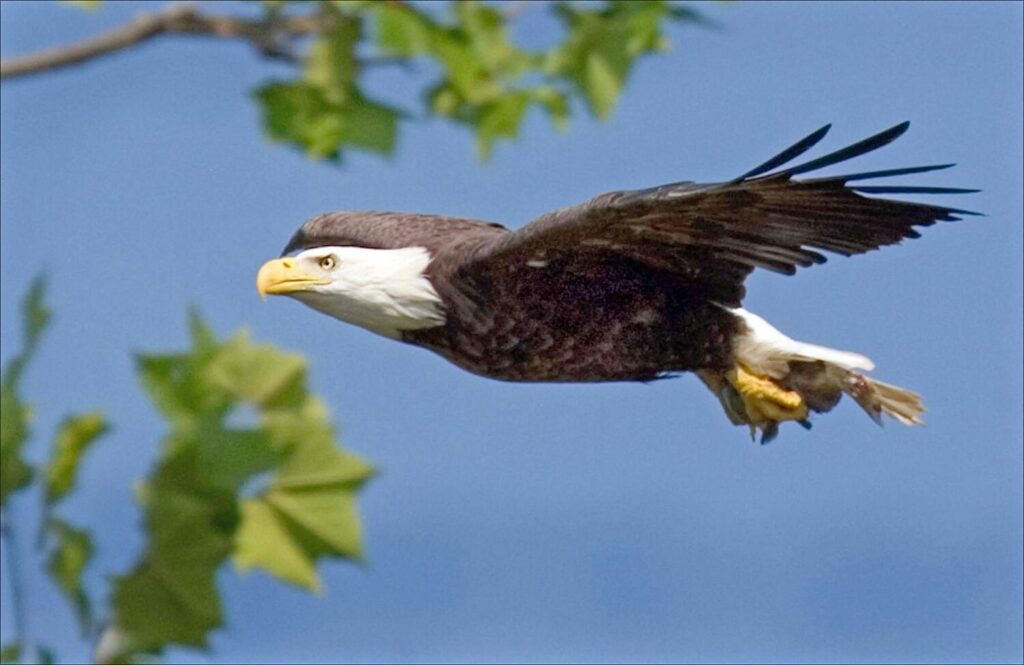
Photo by N.C. Fish & Wildlife Resources Commission
Story originally published in the Sylva Herald, publication from March 3.
Bald eagles, once endangered, have become easier for the public to watch and learn about.
The bird that symbolizes freedom in the United States has been the focus of years-long efforts to keep it from going extinct. In recent years, North Carolina has become a destination for interested nature lovers to learn about bald eagles and view them in the wild.
Bald eagles were often killed for their feathers and talons prior to the Bald Eagle Protection Act passed by Congress in the 1940s, according to a release from the U.S. Fish and Wildlife Service. In Western North Carolina, eagle populations have grown to more than 32 new nests over the last 16 years.
After years of wildlife management organizations working on repopulating the species, the bald eagle was taken off the federal threatened and endangered species list in 2007. And since then, the bald eagle population has been growing even more rapidly. There are now more than 10,000 known breeding pairs across the United States.
The raptors are most commonly seen in the eastern and central parts of North Carolina but there have been sightings in the western area of the state as well. Bald eagles prefer to live near water, rivers or bays specifically, and in places with tall trees to live in. This makes North Carolina perfect for them to thrive.
The first bald eagle pair made North Carolina their home in 1999. Since then, there have been nests built by numerous pairs all over the state, according to Gary Peeples, Deputy Field Office Supervisor/Public Affairs Officer of the Asheville Field Office of U.S. Fish & Wildlife Service.
Chris Kelly, a biologist with the N.C. Wildlife Resources Commission, said there have been sightings in Jackson County, but it is currently unknown if there are active nests here.
“Eagles have now been sighted in every Western North Carolina county, with known nests in most of those counties,” Kelly said.
Bald eagles mate for life, which means they will always return to their same nest even after migrating, Kelly said. While in the beginning bald eagles built their nests near large rivers, there have now been nests spotted near smaller streams and creeks.
One of these places in Jackson County is Panthertown Valley.
Friends of Panthertown, created to help protect and maintain Panthertown Valley, partners with the U.S. Forest Service to protect all wildlife, including bald eagles.
One of the founders of Friends of Panthertown, Dan Pittillo, said in past years he has sighted a bald eagle pair being followed by crows near the Greenway. He believes they were migrating at the time, he said.
While uncommon in Jackson County, many people have seen bald eagles fly over.
“More eagles mean a greater chance of viewing one; however, for those fortunate enough to see an eagle in the wild, it’s important to not disturb the birds,” Peeples said.
Spectators need to stay far away from the birds to not disturb them and keep very quiet with no sudden movements, Peeples said. This is especially important during egg incubation season, which takes place from late fall to early spring.
This way the bird can be kept happy, healthy and reproducing, he said.


